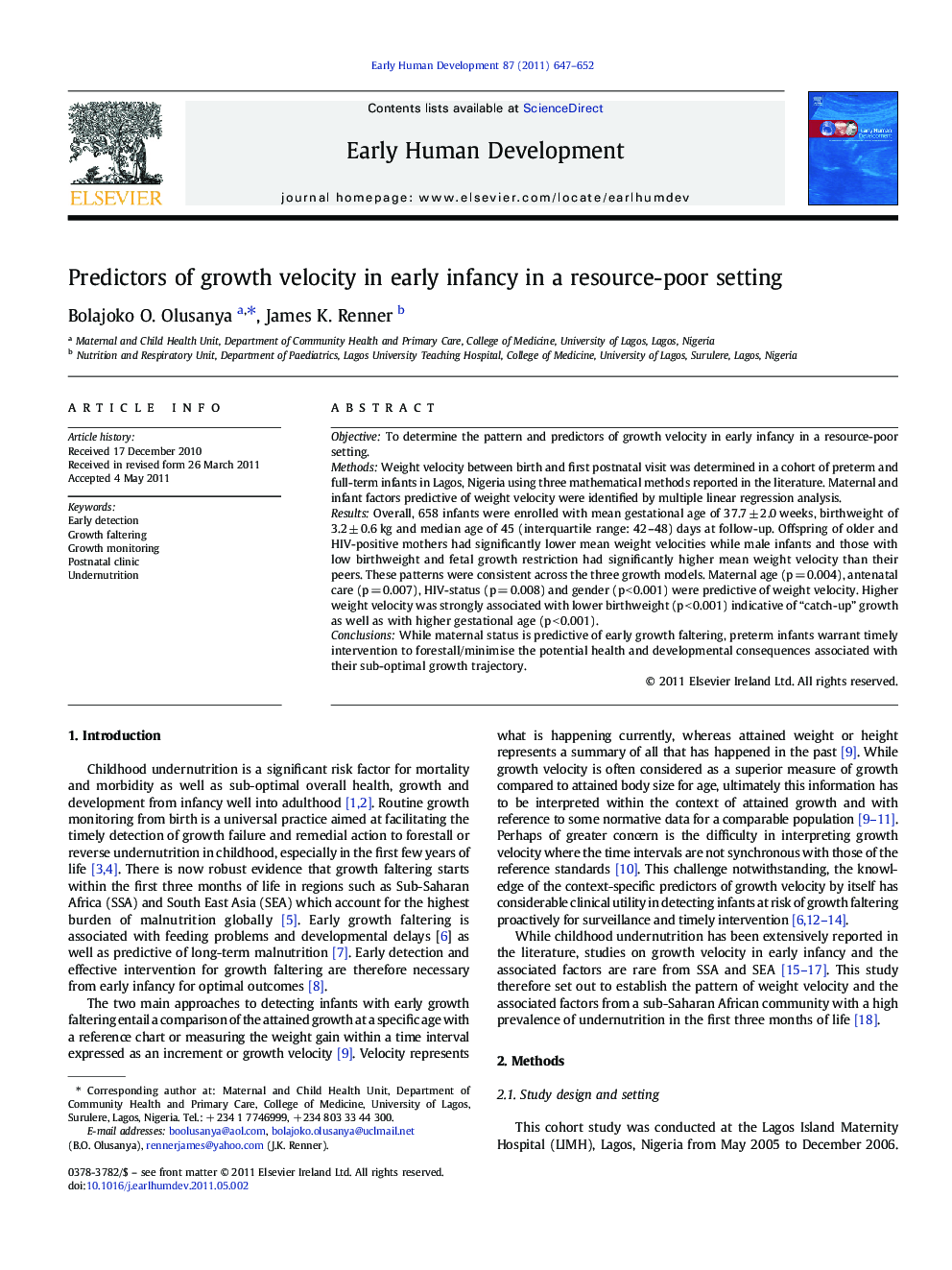| Article ID | Journal | Published Year | Pages | File Type |
|---|---|---|---|---|
| 3917394 | Early Human Development | 2011 | 6 Pages |
ObjectiveTo determine the pattern and predictors of growth velocity in early infancy in a resource-poor setting.MethodsWeight velocity between birth and first postnatal visit was determined in a cohort of preterm and full-term infants in Lagos, Nigeria using three mathematical methods reported in the literature. Maternal and infant factors predictive of weight velocity were identified by multiple linear regression analysis.ResultsOverall, 658 infants were enrolled with mean gestational age of 37.7 ± 2.0 weeks, birthweight of 3.2 ± 0.6 kg and median age of 45 (interquartile range: 42–48) days at follow-up. Offspring of older and HIV-positive mothers had significantly lower mean weight velocities while male infants and those with low birthweight and fetal growth restriction had significantly higher mean weight velocity than their peers. These patterns were consistent across the three growth models. Maternal age (p = 0.004), antenatal care (p = 0.007), HIV-status (p = 0.008) and gender (p < 0.001) were predictive of weight velocity. Higher weight velocity was strongly associated with lower birthweight (p < 0.001) indicative of “catch-up” growth as well as with higher gestational age (p < 0.001).ConclusionsWhile maternal status is predictive of early growth faltering, preterm infants warrant timely intervention to forestall/minimise the potential health and developmental consequences associated with their sub-optimal growth trajectory.
